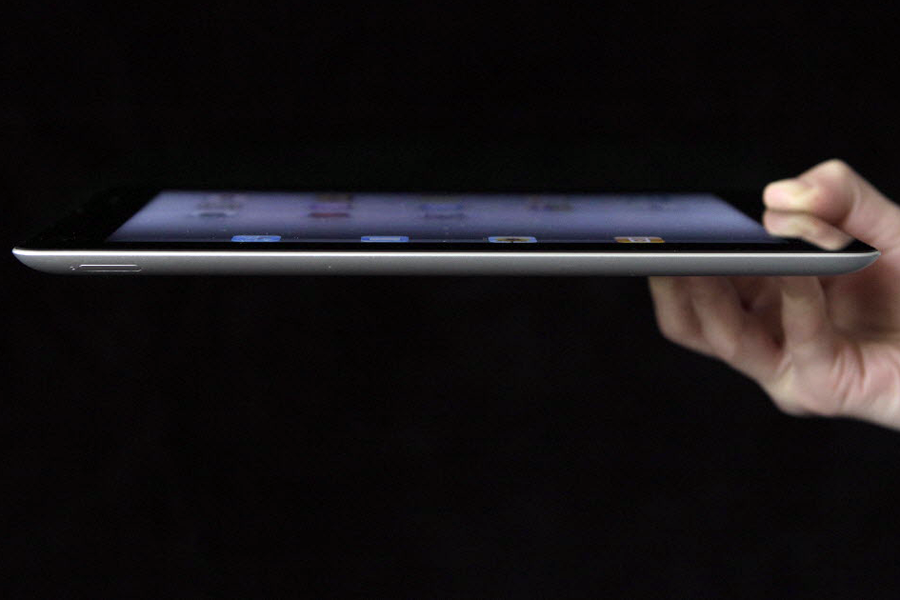An iPad for every student? What Los Angeles school district is thinking.
Loading...
| Los Angeles
America's second largest school district will be giving all its students iPads, a move that is eliciting a great range of reactions – delight from kids, excitement from teachers, and debate and concern from education analysts.
Two elementary schools within the Los Angeles Unified School District (LAUSD) were the first to distribute iPads to students on Tuesday. Forty-five more campuses (kindergarten through high school) will roll them out to all the district's 650,000 students during the next two weeks. Pre-loaded with educational software, each costs $678, more than in stores. A wireless network must be installed on every campus, as well.
The district's iPad investment is raising a host of educational and legal questions, given that students will be taking the tablet computers home. Among them are school spending rules, bond disclosure requirements for the $1 billion needed to fund the program, and the lifespan of the iPads.
So far, the pluses outweigh the minuses in every discussion at LAUSD. Those include the promise of greater joy and flexibility for teachers and students, and a more level playing field of opportunity for poorer students. Possible downsides include distraction in the classroom and the need to provide time for teachers to learn what the iPad can do.
“There is a huge history in American education of being attracted to the new, shiny, hugely promising bauble and then watching the idea fizzle because teachers weren’t properly trained to use it and it just ended up in the closet,” says Renee Hobbs, professor and founding director of the Harrington School of Communication and Media, at the University of Rhode Island. One such device, she says, was the video disc player, which allowed teachers to navigate through video material with great precision, instantly, for lessons. A plus for the iPad, she adds, is that it is already a consumer item with a track record, much like the VHS, which was picked up by schools and used successfully.
Exactly what programs are used on the iPad and how creative teachers will be in using them are of concern for education experts.
“Using an iPad just to say you're using an iPad won't help students. But using an iPad to open the door to new methods of individualized instruction and student expression is an exciting development in education," says Sherri Hope Culver, director of the Center for Media and Information Literacy at Temple University. “Integrating media literacy education into all classrooms is critical. But technology in the classroom should always be in the service of learning.”
Other school systems in the US will be watching what happens with Los Angeles student test scores, as a means of assessing use of iPads.
“Since the issue of Common Core standards has hit US public education, districts are struggling to support learning and teaching in ways that take advantage of new technology. Tablets are the latest flavor,” says Shelley Pasnik, vice president at the Education Development Center. “But there are so many questions to be worked out.” Those include not only how and when to teach teachers about the devices, but also how to maintain the iPads over time.
“We tend to make a lot of assumptions, without slowing down and thinking of the supports that are necessary and how disruptive that could be,” she says. “Other districts have tried this on a smaller scale. This will be important because of the massive scale on which it will be learned.”
Whatever the downside, it is easy to find experts who are eager to see how the LAUSD gambit plays out.
"The LAUSD decision to provide iPads to all students is entirely consistent with the argument [that] this is the most literary of ages,” says Ben Agger, director of the Sociology Department's Center for Theory at the University of Texas, Arlington. “Kids are writing up a storm – albeit often not in ways recognizable to elders. They may not turn in their Shakespeare papers on time, but they blog, post, and text in creative and liberating ways. The LA school district gets this.”
What everyone should be talking – but isn't – are two key issues, says Jim Stigler, associate dean for research and innovation at UCLA Division of Social Sciences. “What software will be used on the iPads? And, how will teachers implement iPads to improve student learning?" he asks.
"I would guess that 10 percent of success will be due to the iPad, 30 percent the software, and 60 percent the teaching that goes with the iPad," says Mr. Stigler. "As long as people think the iPad itself is the main ingredient for success, it will probably fail. But if we invest seriously in improving teaching and software, the potential is huge.”







